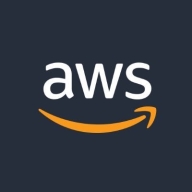

DNIF HYPERCLOUD and AWS Security Hub compete in the security management category. AWS Security Hub has the upper hand due to its comprehensive features and seamless integration.
Features: DNIF HYPERCLOUD is praised for its advanced analytics, customizable dashboards, and powerful threat hunting capabilities. AWS Security Hub receives accolades for its seamless integration with AWS services, interoperability with third-party tools, and extensive security ecosystem.
Room for Improvement: DNIF HYPERCLOUD can improve its documentation, enhance its alerting mechanisms, and refine user interface elements. AWS Security Hub users desire more cost-effective pricing tiers, improved notification precision, and simplified configuration processes.
Ease of Deployment and Customer Service: DNIF HYPERCLOUD is noted for its easier deployment process and responsive support team. AWS Security Hub offers robust deployment options but can be complex, requiring more intensive configuration. AWS’s widespread support network is valuable.
Pricing and ROI: DNIF HYPERCLOUD’s pricing is generally seen as more affordable, offering a favorable ROI for small to mid-sized enterprises. AWS Security Hub, despite higher costs, is considered worth the price due to its extensive features and integrations. The return on investment for AWS Security Hub is justified when leveraging its full suite of functionalities.
| Product | Market Share (%) |
|---|---|
| AWS Security Hub | 7.8% |
| DNIF HYPERCLOUD | 0.5% |
| Other | 91.7% |


| Company Size | Count |
|---|---|
| Small Business | 10 |
| Midsize Enterprise | 5 |
| Large Enterprise | 12 |
| Company Size | Count |
|---|---|
| Small Business | 3 |
| Midsize Enterprise | 1 |
| Large Enterprise | 3 |
AWS Security Hub is a comprehensive security service that provides a centralized view of security alerts and compliance status across an AWS environment. It collects data from various AWS services, partner solutions, and AWS Marketplace products to provide a holistic view of security posture. With Security Hub, users can quickly identify and prioritize security issues, automate compliance checks, and streamline remediation efforts.
The service offers a range of features including continuous monitoring, threat intelligence integration, and customizable dashboards. It also provides automated insights and recommendations to help users improve their security posture. Security Hub integrates with other AWS services like Amazon GuardDuty, AWS Config, and AWS Macie to provide a unified security experience. Additionally, it supports integration with third-party security tools through its API, allowing users to leverage their existing security investments.
With its user-friendly interface and powerful capabilities, AWS Security Hub is a valuable tool for organizations looking to enhance their security and compliance posture in the cloud.
DNIF HYPERCLOUD is a cloud native platform that brings the functionality of SIEM, UEBA and SOAR into a single continuous workflow to solve cybersecurity challenges at scale. DNIF HYPERCLOUD is the flagship SaaS platform from NETMONASTERY that delivers key detection functionality using big data analytics and machine learning. NETMONASTERY aims to deliver a platform that helps customers in ingesting machine data and automatically identify anomalies in these data streams using machine learning and outlier detection algorithms. The objective is to make it easy for untrained engineers and analysts to use the platform and extract benefit reliably and efficiently.
We monitor all Security Orchestration Automation and Response (SOAR) reviews to prevent fraudulent reviews and keep review quality high. We do not post reviews by company employees or direct competitors. We validate each review for authenticity via cross-reference with LinkedIn, and personal follow-up with the reviewer when necessary.